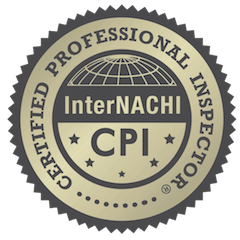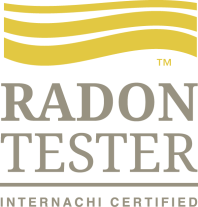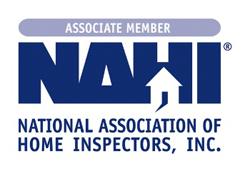Orangeburg Pipe
|
Orangeburg Pipe |
| During the industrial age in the United States, a unique type of conduit evolved, one whose wall was made of ground cellulose (wood) fibres bound together with a special water resistant adhesive, and, thereafter, impregnated with liquefied coal tar pitch. The first known use of “fibre” pipe was for water transmission: a 1.5-mile pipeline in the Boston area, which stayed in service for 60+ years (1865-1927). Nothing more happened with the commercial manufacturing of this “pipe” until the late 1800s … when it was made, and used, exclusively as a “conduit” … not yet as a pipe.
In 1893, Stephen Bradley, Sr. (then owner of the Union Electric Company and the Nyack Electric Light and Power Company) founded the Fibre Conduit Company in Orangeburg, New York. The electric power generating plants (owned by Bradley) were good “companions” to the new pipe company; the exhaust steam from the power generation facilities was used to dry the walls of the fibre conduit … before they were “sealed” with hot/liquefied coal tar pitch. During the following forty years, the fibre conduit business flourished — many buildings used the 5-foot laying length conduit (formed in a “flattened,” i.e., more oval-shaped, cross-section) for running electrical lines throughout the floors/walls of new structures. Many companies got into the business of manufacturing this type of conduit. (Its use for sewage conveyance was still many years off.) Some of the more notable buildings containing miles of the fibre electrical conduit were the New York Park Avenue Tower and the Empire State Building … along with other skyscrapers in New York City and other cities. Demand for the fibre conduit rose even higher during World War II … for use in constructing the armed forces’ new airfields and military bases. In the early years of the 1900s, the market expanded for fibre conduit. Subways were being built beneath the larger eastern seaboard cities; fibre conduit was used to contain electrical, telephone, telegraph, etc., wiring within the subway tunnels. It was also used to create underground duct banks for electrical, etc. distribution under streets and roads; and in direct burial situations along railroad rights-of-way to carry wiring. It was later tried out by the petroleum industry (as a “pipe”) to convey waste “salt water,” resulting from oil drilling operations, cross-country to points of disposal or treatment. It was soon learned that under “pressure” situations it did not hold together … under “gravity” circumstances, it performed well (as such, setting the stage for its later use as “gravity” sewer pipe … starting in the mid to late 1940s). During the petroleum “trial” days (1937 – 1944), the fibre conduit pipe tested was called “Alkacid” by the Fibre Conduit Co. of Orangeburg, NY. The oil industry soon stopped using the fibre “Alkacid” pipe, and started using cement-asbestos pipe … as then manufactured by the Johns-Manville and Keasby & Mattison Companies. Several companies made fibre conduit in the early 1900s, including, but not limited to:
Fibre Conduit was by far the largest producer. The conduit (and later, the sewer pipe) made by many of these companies were all made in basic accordance with the applicable Commercial and ASTM Standards ( see list later in this document). Oftentimes, it was hard to recognize one manufacturer’s product from that of another’s. The name of the Fibre Conduit Company was changed to the Orangeburg Manufacturing Company in 1948. The post-war housing building boom was then underway, and the types of pipe then available ( and affordable) for sewer and drains were limited. A heavier-walled (formed by the centrifugal lamination of several layers of ground wood cellulose fibres) and round version of the fibre conduit was developed and sold as “Orangeburg” pipe (in sizes ranging from 2″ to 18″ I. D.) for sewer and drain applications (including a perforated version for leach fields, and as drain tile for farm fields). The joints were made with couplings of similar material — utilizing no gaskets, joint sealant, etc., just simple compression, thus, making the pipe potentially susceptible to I/I and/or root intrusion. The pipe was lightweight (but brittle), and it could be cut by hand with carpenter saws. NOTE: It was recognized early on that fibre conduit pipe (all brands) had a tendency to deform when subjected to concentrated pressures over long periods of time. Thus, the manufacturer emphasized the need to properly “bed” the pipe — i.e., achieve good compaction all through the entire pipe zone — using soil free of rocks/debris. (Good bedding didn’t, however, prevent “deformation” of the pipe by tree roots.) This is a method strongly similar to how modern-day flexible pipe, such as PVC, is to be bedded.
|
 |
| Demand for fibre sewer pipe in the 1950s and 1960s skyrocketed! The plant at Orangeburg was expanded several times. At least three other companies (including the Line Material Company of Barton, WI, and the Brown Company (also known as Bermico) of Berlin, NH) also made a similar sewer pipe, but Orangeburg was by far the largest manufacturer. 500 tons per week were shipped out to users (from the Orangeburg, NY, plant) throughout the USA during the 50s and 60s.
It is reputed that companies in Canada and England also manufactured coal tar impregnated wood fibre sewer pipe from the 1950s through the 1970s. It was mostly known in those areas as either “no-corrode” or as “black” pipe. Then, in the late 1960s and the early 1970s, PVC pipe began to come into its own. The “end” PVC sewer pipe product was cheaper for sewer/drain applications. The Orangeburg, New York, plant closed in the fall of 1972. Millions of feet of the fibre electrical conduit are still in service within building structures and under our nation’s streets/roads. A similar amount of the fibre conduit sewer pipe is still in service as house connection sewers, in leach fields, etc., throughout the United States. Right, wrong, or indifferent, fibre conduit pipe became a well used sewer/plumbing pipe … across the country. Such pipe was commonly/often referred to as “Orangeburg” pipe, irrespective of which company actually made it. Applicable Standards:
Based on what has been learned about this pipe material over the past 50-60 years, if you believe that you may have this type of pipe in your sewage conveyance systems (private or public), find out where it is and what condition it is in, since it has demonstrated itself to often have a limited structural life expectancy. It reportedly deforms and loses its circular cross-section, allowing infiltration and root intrusion. Tree roots have often been reported to wrap themselves around the outside perimeter of the pipe barrels of sewers made of coal tar impregnated wood fibre pipe and, as a result, precipitate the deformation and/or crushing of the pipe. On the other hand, for being a “coal tar impregnated toilet paper tube,” this product didn’t do so badly. The jury is still out on several of the more modern day pipe materials as to their durability/longevity. |













